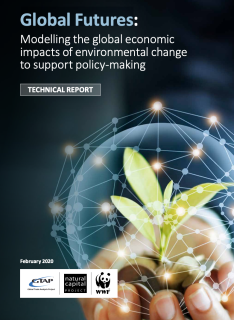
In 2017, WWF initiated the ‘Global Futures’ project to enhance awareness among global political and business leaders of the risks to economic prosperity of global environmental degradation, and to help catalyse action by making the economic case for reversing these trends.
This study, which calculates the economic cost of nature’s decline across 140 countries, shows that the loss of six ecosystem services under a business-as-usual trajectory leads to losses of US$9.87 trillion in real GDP by 2050. This represents an annual loss of US$479 billion per year. The United States, Japan, and the United Kingdom would see the largest losses of annual GDP in absolute terms, with $83 billion, $80 billion, and $21 billion, respectively, wiped off their economies each year by 2050. Developing countries will also be badly affected, with Madagascar, Togo, and Vietnam predicted to lose the most as a percentage of their GDP (4.2 percent, 3.4 percent, and 2.8 percent per year, respectively).
In particular, the study predicts annual global losses by 2050 of:
- US$327 billion from damaged protections from flooding, storm surges, and erosion due to changes in vegetation along coastlines and sea-level rises
- US$128 billion from loss of carbon storage which protects against climate change
- US$15 billion from lost habitats for bees and other pollinating insects
- US$19 billion from reduced water availability for agriculture
- US$7.5 billion from lost forests and forest ecosystem services
The study also foresees global price hikes over the next 30 years for key commodities, which could lead to a rise in food prices for consumers globally, with implications for food security in many regions.
In contrast, under a scenario in which land use is carefully managed to avoid further loss of areas important for biodiversity and ecosystem services, which the study terms the ‘Global Conservation’ scenario, economic outcomes would be dramatically better, with global GDP rising by $490 billion per year above the business-as-usual calculation.
